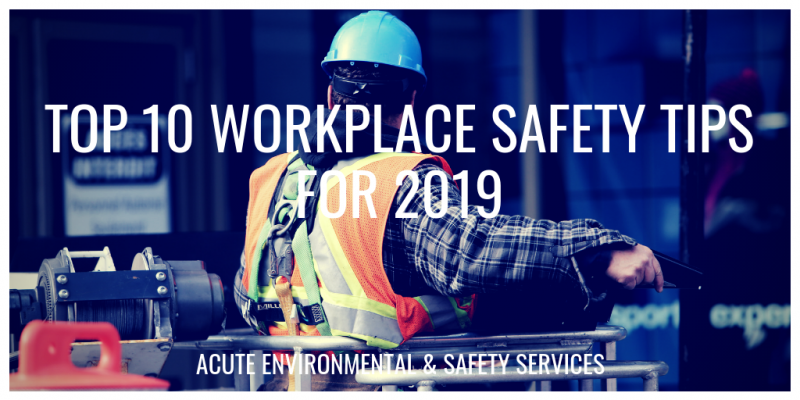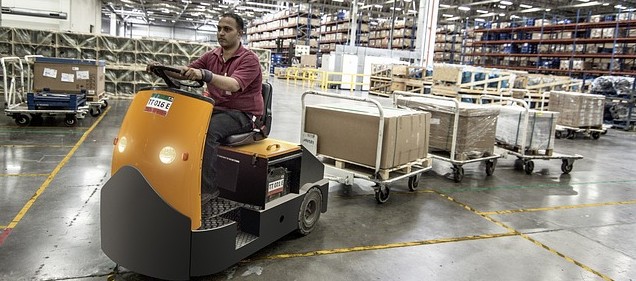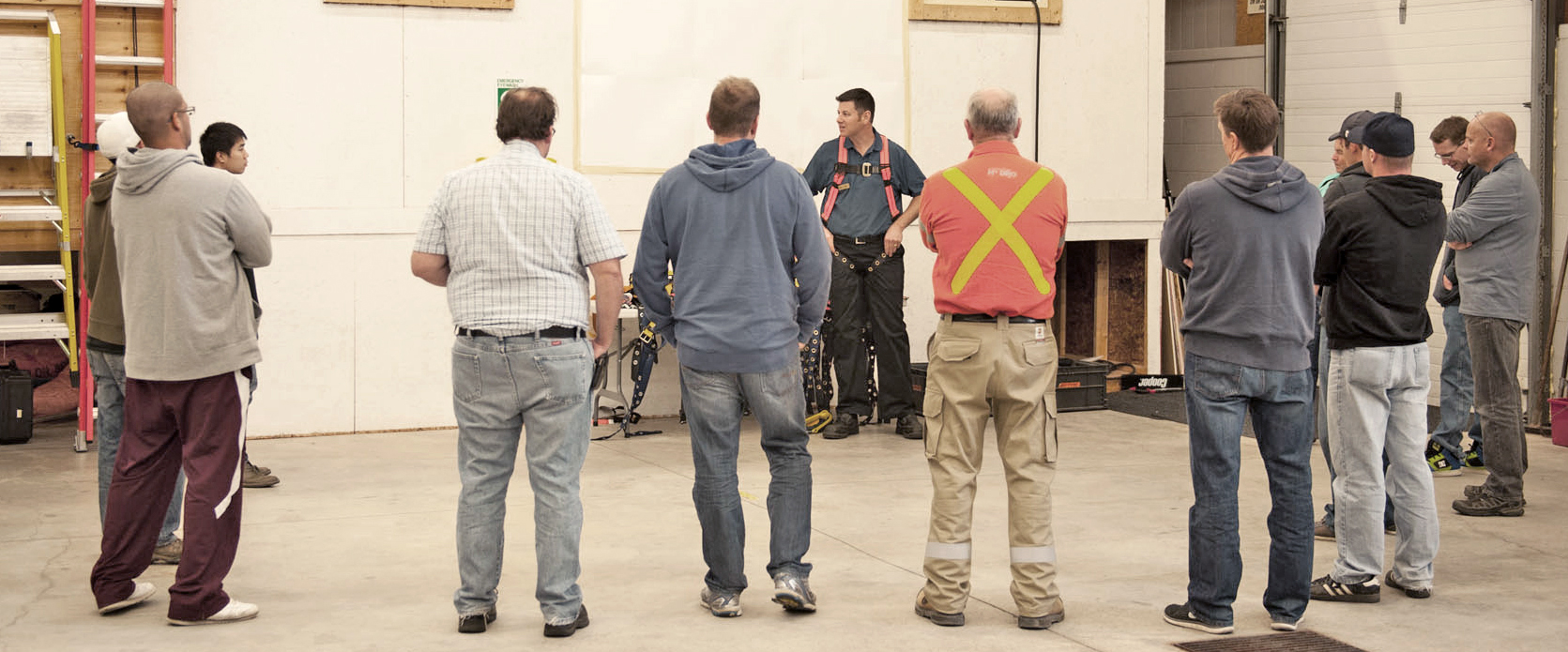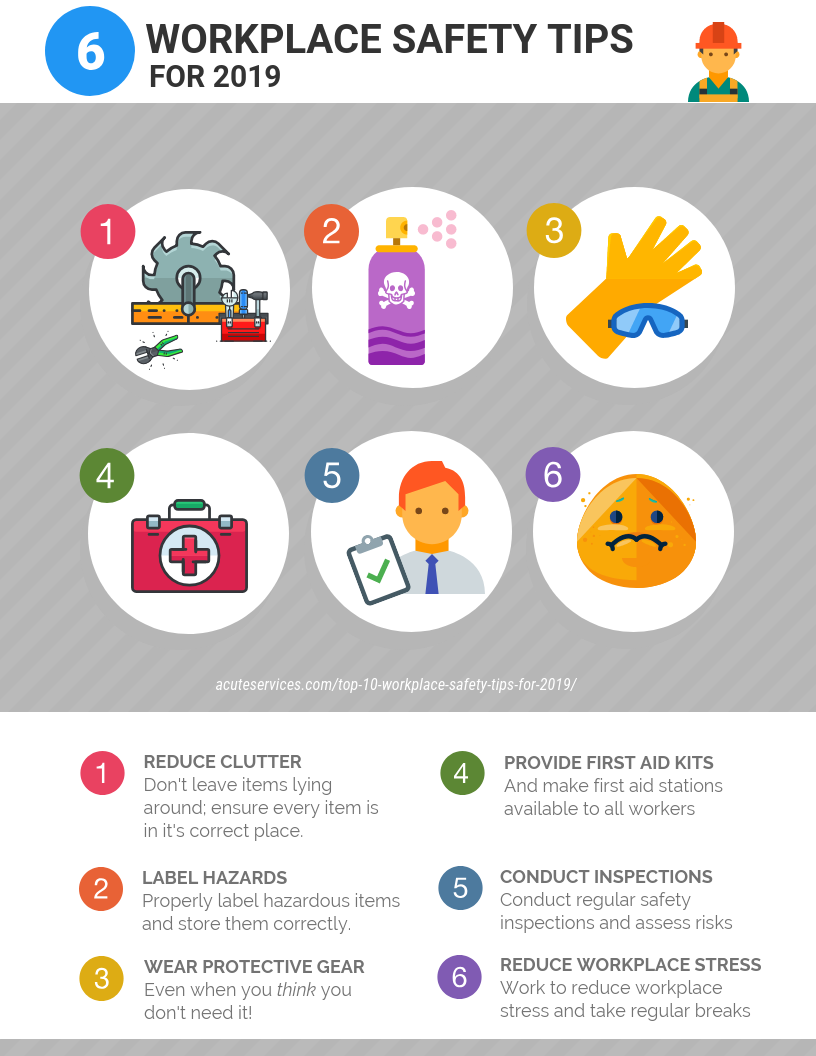
A great New Year’s resolution is implementing workplace safety tips to keep your employees safe on the job. Read on to discover 10 of the best workplace safety tips for 2019, and keep in mind these tips apply to both employees and employers/supervisors. The most important thing is to make sure everyone on the job is suitably trained. You can trust ACUTE Environmental & Safety Services to provide comprehensive health and safety training. Check our course calendar for upcoming dates and register today!
Top 10 Workplace Safety Tips For 2019
1. Keep traffic areas clean, organized, and clutter-free
Slipping, tripping, and driving incidents are usually caused by scattered objects or spills on the floor. It’s also important to note that disorganization can also produce stress, which can cause your workers to be more prone to mistakes, accidents, and decreased productivity.
Additionally, safety mats can save your employees from nasty slips and fall if placed strategically around the workplace. You can also invest in dust control mats for your workplace entrances, which help to reduce the germs that are being brought inside. This helps to reduce the number of infections, flu, and other germ-induced illnesses in the workplace.
Lift drivers need clear lanes in which to operate, and pedestrians must be able to have adequate space to avoid getting in the way.

Lift drivers need clear lanes in which to operate.
2. Store and label hazardous materials properly
When not stored properly, hazardous materials put everyone’s safety at risk. Make sure these materials are stored in areas with proper ventilation. If your workplace deals with such materials:
- Keep the amount of flammable and combustible substances at the lowest practical quantity
- Ensure storage areas are appropriately labelled and signs are visible
- Contain and manage leaks and spills
- Make sure containers, pipework, and attachments are damage-free
- Provide appropriate fire protection systems
- Manage fire and explosion risks
- Manage all risks associated with storage and handling systems and equipment.

Hazardous materials put everyone’s safety at risk
3. Always wear protective gear
Make sure you’re always wearing the personal protective equipment (PPE) that you’re required to bring to the job, and that is provided to you by your employer. It could be something as small as earplugs, or as large as a chemical suit, but this PPE exists for a reason. Wearing the correct PPE for the job you’re performing is just another way to keep you safe from injury. Your employer should also make sure everything is readily available.

Always wear the proper protective gear.
4. Post updated WHMIS symbols
In 2015, a new look was given to the WHMIS symbols, replacing the old black and white circles with the red, pointed borders. A letter-based classification system with clear and concise descriptions of the hazards they entail was also instituted.
To help keep all the changes straight, here’s a handy infographic courtesy of Workplace Alberta.
5. Provide first aid training and stations
This can make a world of difference. Wall-mounted stations should be fully stocked with a first aid kit that has all the supplies needed to handle the most commonly encountered situations in the workplace. Those stations are only effective if employees know what to do with them, so conduct regular first aid training and refreshers.

First aid kits and respondents can make a world of difference.
6. Conduct regular safety inspections
Your workers need to know general risks and courses of action in case of emergency and risks specific to their own role. Here are some tips for doing a safety inspection in your workplace.
7. Avoid assigning the same repetitive tasks
This can be taxing for your employees in two ways. Repetitive tasks can be strenuous on their body and their mind, and can cause occupational overuse syndrome (OOS), affecting the back, shoulders, arms, elbows, fingers, wrists, and other joints and muscles. The common symptoms include:
- Uncomfortable aches
- Weak muscles
- Restricted joint mobility
- Swelling
- Numbness
OOS will not simply go away and its effects will need to be treated, potentially causing your workers to miss valuable time on the job.

Take steps to avoid occupational overuse syndrome.
8. Reduce workplace stress
The most common causes of stress and work burn-out are long hours, heavy workload, job insecurity, and conflicts. These can lead to depression, sleeping difficulties, and affect employees concentration.
Workplace stress happens when the requirements of the employee’s position surpass their capabilities, resources, and current state. This causes the frustration that, if it continues for a long period of time, can turn into a chronic stress. Other risk factors of stress can include conflicts at work, being bullied or even harassed.
The effects of workplace stress can range from mild to severe. Physical signs of stress are:
- Chest pain
- Heart palpitations
- Fatigue
- Indigestion
- Low immune system
- Muscle tension
- Pains and headaches
- Sweating
- Disturbed appetite
- Sleeping issues
Psychological effects of stress are also present and they seriously reduce the quality of your employees’ lives. These include feeling overwhelmed, frustrated, worried or guilty; being irritable or unhappy; losing confidence and decisiveness; having negative and/or racing thoughts; and memory issues. Any of these issues can lead to serious accidents in the workplace. Make sure your employees take regular breaks on the job and vacation time through the year.

In 2019, work to promote a healthy lifestyle and create a stress-free environment in the workplace.
9. Report unsafe conditions
Employees have an everyday, firsthand perspective on things. The best way to stop unsafe conditions from developing or growing worse is to report them to supervisors as soon as you notice them and be part of the solution. Your supervisor is legally obligated to provide all employees with a safe working environment and should take care of any unsafe conditions, but sometimes they have to be made aware of those conditions to do so.
It’s important to always report any hazardous situation or unsafe condition as soon as possible, to keep yourself and other employees safe. Work together to find a solution to prevent unsafe conditions from recurring.

Reporting unsafe conditions is everyone’s responsibility.
10. Stay up to date with training
Hands-on, practical training is the best way to keep employers and workers safe in the workplace. Courses such as Joint Health and Safety Committees, WHMIS 2015 (GHS), and Worker Health & Safety Awareness help workers learn important legislation and health and safety techniques to keep themselves and others safe.
For employers in Ontario looking to ensure their employees’ safety training, there are a lot of bases to cover. If you’re feeling overwhelmed or if you are not sure where to begin, be sure to download our free Employee Safety Training Checklist!

Top workplace safety tip: Make sure everyone is properly trained for the job they have to do.
Workplace Safety Tips – An Infographic
Feel free to share the infographic below to help remind others to stay safer in the workplace!

Trust ACUTE with your workplace safety needs!
Why get workplace safety training with ACUTE? Here are just some of the benefits of working with ACUTE.

- Open Door Instructor-Student Partnership – ACUTE’s training services emphasize client participation. Staff foster relationships with clients and serve as a touchstone for advice anytime moving forward.
- Serving Your Team and Industry – With a vast array of clients in manufacturing, construction, health, academic, and government sectors, ACUTE brings the best safety practices from across the spectrum to your workplace.
- 100 Years Combined Experience – ACUTE provides comprehensive health and safety training, on-site safety services, and consulting services. With over 100 years of combined experience, our company staff offer more than theoretical or abstract ideas. ACUTE offers solutions.
- Track Record of Success – ACUTE is rated 4.9/5 stars on Google reviews, demonstrating a commitment to our clients, quality, and passion for training.
“We have relied on ACUTE for years to train our staff and keep them safe on the job site.”
– Bob, Millwrighting Company
Click here to see what training courses we have at ACUTE or contact us today for quality training in your workplace or on-site at ACUTE’s proven training facilities!
ACUTE is located in Waterloo, Ontario, and services customers from cities such as Toronto, Mississauga, Brampton, Hamilton, Milton, Kitchener, London, Guelph, and others across Ontario.
Sources:

